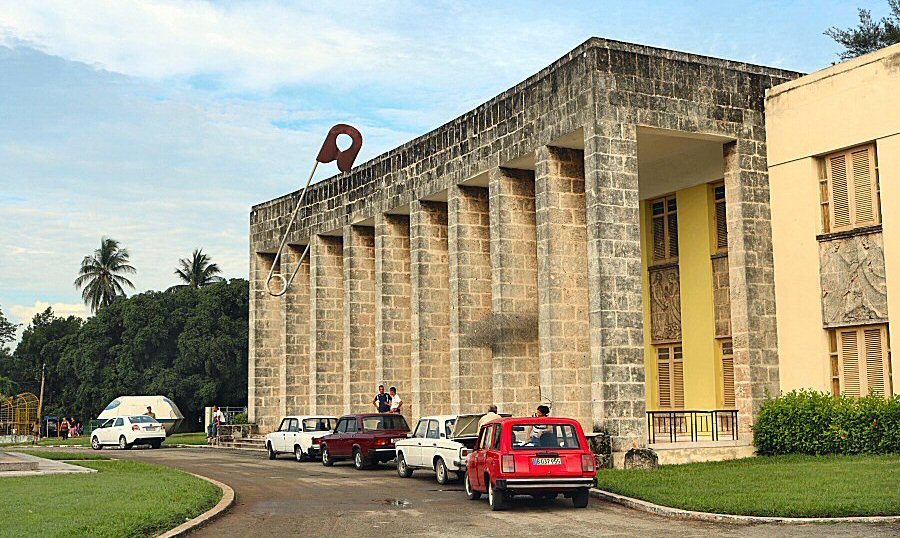

The obelisk has a height of 32
meters. It is made of jaimanite stone and rises on a black
granite base of 8 square meters. Above the base, there are
half-reliefs with allegorical figures. They are the work of
the Cuban artists Lumbardo and Ernesto Navarro. The obelisk
has a square section with four equal trapezoidal faces. The
body of the tower is decorated with geometric motifs at its
center. They function to allow the entry of air and light
inside of the obelisk. The body of the obelisk ends in a
balcony that serves as an excellent viewpoint. It is topped
by a lighthouse. The needle-shaped lightning rod on the
lighthouse led to the popular imaginary that the monument
represents a syringe, as it was built to pay homage to
Finlay that was nicknamed La Jeringuilla (the Syringe), but
this is not true. Even though, the obelisk is dedicated to
Carlos J. Finlay, unfortunately there is not any inscription
or plaque that indicates it.
The obelisk and the four buildings
around it constitute an architectural artistic Art-Deco
complex, in that the obelisk is the central element. The
complex was designed and built by the Cuban engineer José
Pérez Benitoa with the support of the Ministry of Public
Works. These buildings are:
Conrado Duany Pulido
Basic High School
Lázaro Ramón Alpízar
Hernández School of Economics (former
Kindergarten School)
San Alejandro National
Academy of Fine Arts (former Flor Martiana
Educational Center)
The asylum Hermanas
Giral, old nursing home "Conchita Gómez"
These four buildings have common
characteristics, such as:
All buildings are the
same distance from the Obelisk.
All are two-story
buildings with a central courtyard.
Each building has a
large porch, consisting of ten columns, made
of jaimanite stone.
Each porch is slightly
concave, adapting to the layout of the
square.
Above each porch, there
is a flat front and the only adornment at
the facade is the name of the institution.
All buildings have a
front area, occupied by a garden and car
parking.
Each building occupies
an area of around 2.000 square meters.
In the panels that separate the windows of both floors, there are sculptures, representing the activities of each center.
The Municipal Department of
Culture awards a prize that consists of a small ceramic
replica of the obelisk. This is granted to people that stand
out in promoting the Marianao culture.